
The Troubles were an ethno-nationalist conflict in Northern Ireland that lasted for about 30 years from the late 1960s to 1998. Also known internationally as the Northern Ireland conflict, it began in the late 1960s and is usually deemed to have ended with the Good Friday Agreement of 1998. Although the Troubles mostly took place in Northern Ireland, at times violence spilled over into parts of the Republic of Ireland, England, and mainland Europe.
The Ulster Defence Regiment (UDR) was an infantry regiment of the British Army established in 1970, with a comparatively short existence ending in 1992. Raised through public appeal, newspaper and television advertisements, their official role was the "defence of life or property in Northern Ireland against armed attack or sabotage" but unlike troops from Great Britain they were never used for "crowd control or riot duties in cities". At the time the UDR was the largest infantry regiment in the British Army, formed with seven battalions plus another four added within two years.

Operation Banner was the operational name for the British Armed Forces' operation in Northern Ireland from 1969 to 2007, as part of the Troubles. It was the longest continuous deployment in British military history. The British Army was initially deployed, at the request of the unionist government of Northern Ireland, in response to the August 1969 riots. Its role was to support the Royal Ulster Constabulary (RUC) and to assert the authority of the British government in Northern Ireland. This involved counter-insurgency and supporting the police in carrying out internal security duties such as guarding key points, mounting checkpoints and patrols, carrying out raids and searches, riot control and bomb disposal. More than 300,000 soldiers served in Operation Banner. At the peak of the operation in the 1970s, about 21,000 British troops were deployed, most of them from Great Britain. As part of the operation, a new locally-recruited regiment was also formed: the Ulster Defence Regiment (UDR).
The Reavey and O'Dowd killings were two coordinated gun attacks on 4 January 1976 in County Armagh, Northern Ireland. Six Catholic civilians died after members of the Ulster Volunteer Force (UVF), an Ulster loyalist paramilitary group, broke into their homes and shot them. Three members of the Reavey family were shot at their home in Whitecross and four members of the O'Dowd family were shot at their home in Ballydougan. Two of the Reaveys and three of the O'Dowds were killed outright, with the third Reavey victim dying of brain haemorrhage almost a month later.

1st Battalion, Ulster Defence Regiment was formed in 1970 as part of the 7 original battalions specified in The Ulster Defence Regiment Act 1969, which received Royal Assent on 18 December 1969 and was brought into force on 1 January 1970. It was amalgamated with the 9th Battalion, Ulster Defence Regiment in 1984 to form the 1st/9th Battalion, Ulster Defence Regiment.

2nd Battalion, Ulster Defence Regiment was formed in 1970 as part of the seven original battalions specified in the Ulster Defence Regiment Act 1969, which received royal assent on 18 December 1969 and was brought into force on 1 January 1970. It was, along with the rest of the regiment, amalgamated with the Royal Irish Rangers in 1992 to form the Royal Irish Regiment. It had previously been amalgamated in 1991 with the 11th Battalion Ulster Defence Regiment to form the 2nd/11th Battalion Ulster Defence Regiment.

The 11th (Craigavon) Battalion, Ulster Defence Regiment was formed from companies of the 2nd Battalion Ulster Defence Regiment and the 3rd Battalion Ulster Defence Regiment in 1972. In 1991 under the reductions planned in Options for Change by the British Army, it again amalgamated with 2 UDR to form the 2nd/11th Battalion Ulster Defence Regiment.

The 9th Battalion, Ulster Defence Regiment was formed in 1972 from two companies of the 1st Battalion Ulster Defence Regiment creating a second battalion in County Antrim. It was amalgamated with 1 UDR in 1984 to form 1/9 UDR.

The 6th Battalion, Ulster Defence Regiment was formed in 1970 as part of the seven original battalions specified in The Ulster Defence Regiment Act 1969, which received Royal Assent on 18 December 1969 and was brought into force on 1 January 1970. It was, along with the rest of the regiment, amalgamated with the Royal Irish Rangers in 1992 to form the Royal Irish Regiment.

7th Battalion, Ulster Defence Regiment was formed in 1970 as part of the 7 original battalions specified in The Ulster Defence Regiment Act 1969, which received Royal Assent on 18 December 1969 and was brought into force on 1 January 1970. It was amalgamated with the 10th Battalion, Ulster Defence Regiment in 1984 to form the 7th/10th Battalion, Ulster Defence Regiment.

The 10th Battalion, Ulster Defence Regiment was formed in 1972 from elements of the 7th Battalion, Ulster Defence Regiment creating a second battalion in Belfast. It was again amalgamated with 7 UDR in 1984 to form the 7th/10th Battalion, Ulster Defence Regiment.
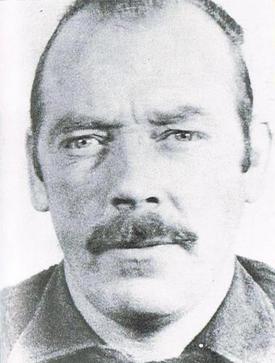
William Henry Wilson Hanna MM was a high-ranking Ulster loyalist who founded and led the Mid-Ulster Brigade of the Ulster Volunteer Force (UVF) until he was killed, allegedly by Robin Jackson, who took over command of the brigade.
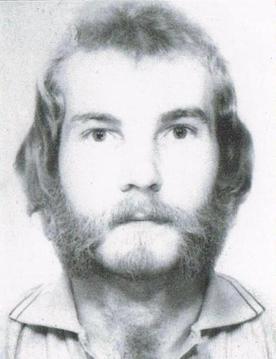
Harris Boyle was an Ulster Defence Regiment (UDR) soldier and a high-ranking member of the Ulster Volunteer Force (UVF), a Northern Irish loyalist paramilitary organisation. Boyle was implicated in the 1974 Dublin and Monaghan bombings, and took part in the attack at Buskhill, County Down when an armed UVF gang wearing British Army uniforms ambushed The Miami Showband at a bogus military checkpoint. The popular Irish cabaret band was driving home to Dublin after a performance in Banbridge. He was one of the two gunmen killed when the bomb they were loading onto the band's minibus exploded prematurely. He is sometimes referred to as Horace Boyle.
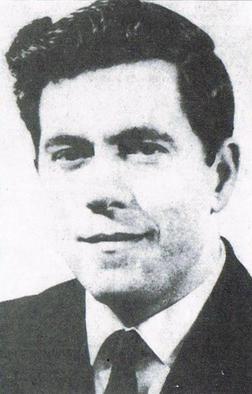
Robert William McConnell, was an Ulster loyalist paramilitary who allegedly carried out or was an accomplice to a number of sectarian attacks and killings, although he never faced any charges or convictions. McConnell served part-time as a corporal in the 2nd Battalion Ulster Defence Regiment (UDR), and was a suspected member of the Ulster Volunteer Force (UVF).
UVF Mid-Ulster Brigade formed part of the loyalist paramilitary Ulster Volunteer Force in Northern Ireland. The brigade was established in Lurgan, County Armagh in 1972 by its first commander Billy Hanna. The unit operated mainly around the Lurgan and Portadown areas. Subsequent leaders of the brigade were Robin Jackson, known as "The Jackal", and Billy Wright. The Mid-Ulster Brigade carried out many attacks, mainly in Northern Ireland, especially in the South Armagh area, but it also extended its operational reach into the Republic of Ireland. Two of the most notorious attacks in the history of the Troubles were carried out by the Mid-Ulster Brigade: the 1974 Dublin and Monaghan bombings and the Miami Showband killings in 1975. Members of the Mid-Ulster Brigade were part of the Glenanne gang which the Pat Finucane Centre has since linked to at least 87 lethal attacks in the 1970s.
The 1991 Cappagh killings was a gun attack by the loyalist Ulster Volunteer Force (UVF) on 3 March 1991 in the village of Cappagh, County Tyrone, Northern Ireland. A unit of the UVF's Mid-Ulster Brigade drove to the staunchly republican village and shot dead three Provisional IRA members and a Catholic civilian at Boyle's Bar.

The Hillcrest Bar bombing, also known as the "Saint Patrick's Day bombing", took place on 17 March 1976 in Dungannon, County Tyrone, Northern Ireland. The Ulster Volunteer Force (UVF), a loyalist paramilitary group, detonated a car bomb outside a pub crowded with people celebrating Saint Patrick's Day. Four Catholic civilians were killed by the blast—including two 13-year-old boys standing outside—and almost 50 people were injured, some severely.
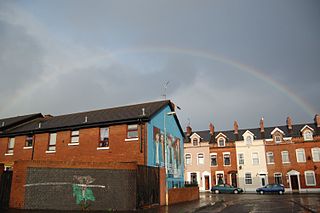
The New Lodge Six shooting took place in the late hours of 3 February and the early hours of 4 February 1973, six men, all of whom were Catholics, were shot and killed in the New Lodge area of north Belfast:
The Charlemont pub attacks were co-ordinated militant Loyalist paramilitary attacks on two pubs in the small village of Charlemont, County Armagh, Northern Ireland, carried out by the Ulster Volunteer Force (UVF) on 15 May 1976. The attacks have been attributed to the Glenanne gang which was a coalition of right-wing Loyalist paramilitaries and subversive members inside the Royal Ulster Constabulary (RUC), the Ulster Defense Regiment (UDR) and the British Army.
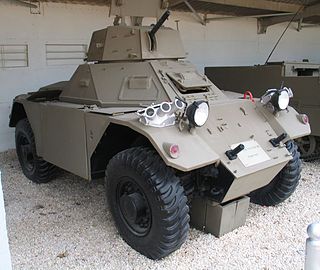
On 2 May 1974 the Provisional Irish Republican Army (IRA) attacked a British Army base manned by the Ulster Defence Regiment (UDR) near the Northern Ireland–Republic of Ireland border at Clogher, County Tyrone. The IRA unit engaged the small base with automatic weapons, rockets and improvised mortars. Ferret armoured cars were deployed to the scene and a fierce firefight erupted. The IRA withdrew behind the border with the Republic. The assault on the outpost killed greenfinch Eva Martin and wounded another UDR soldier.









